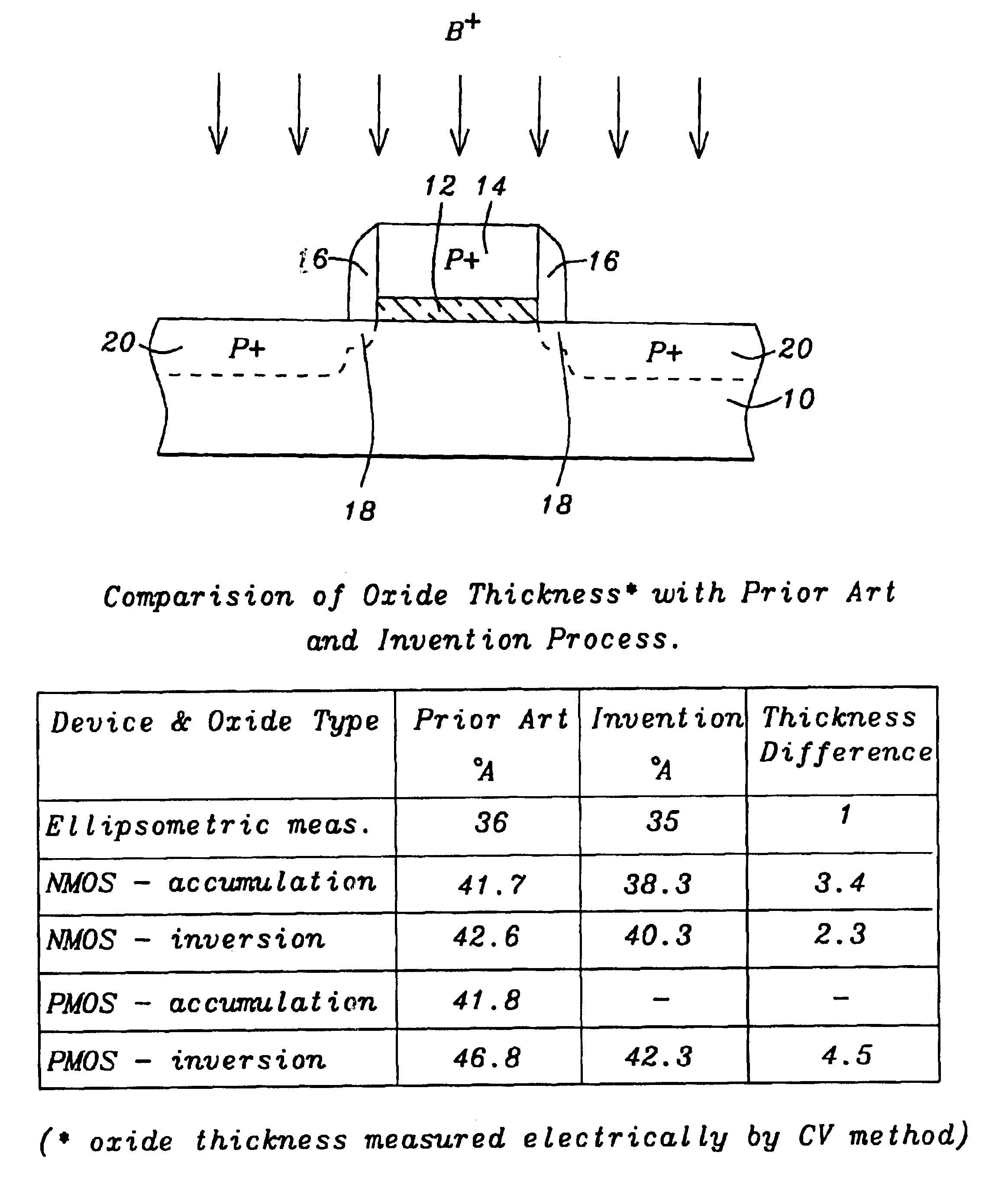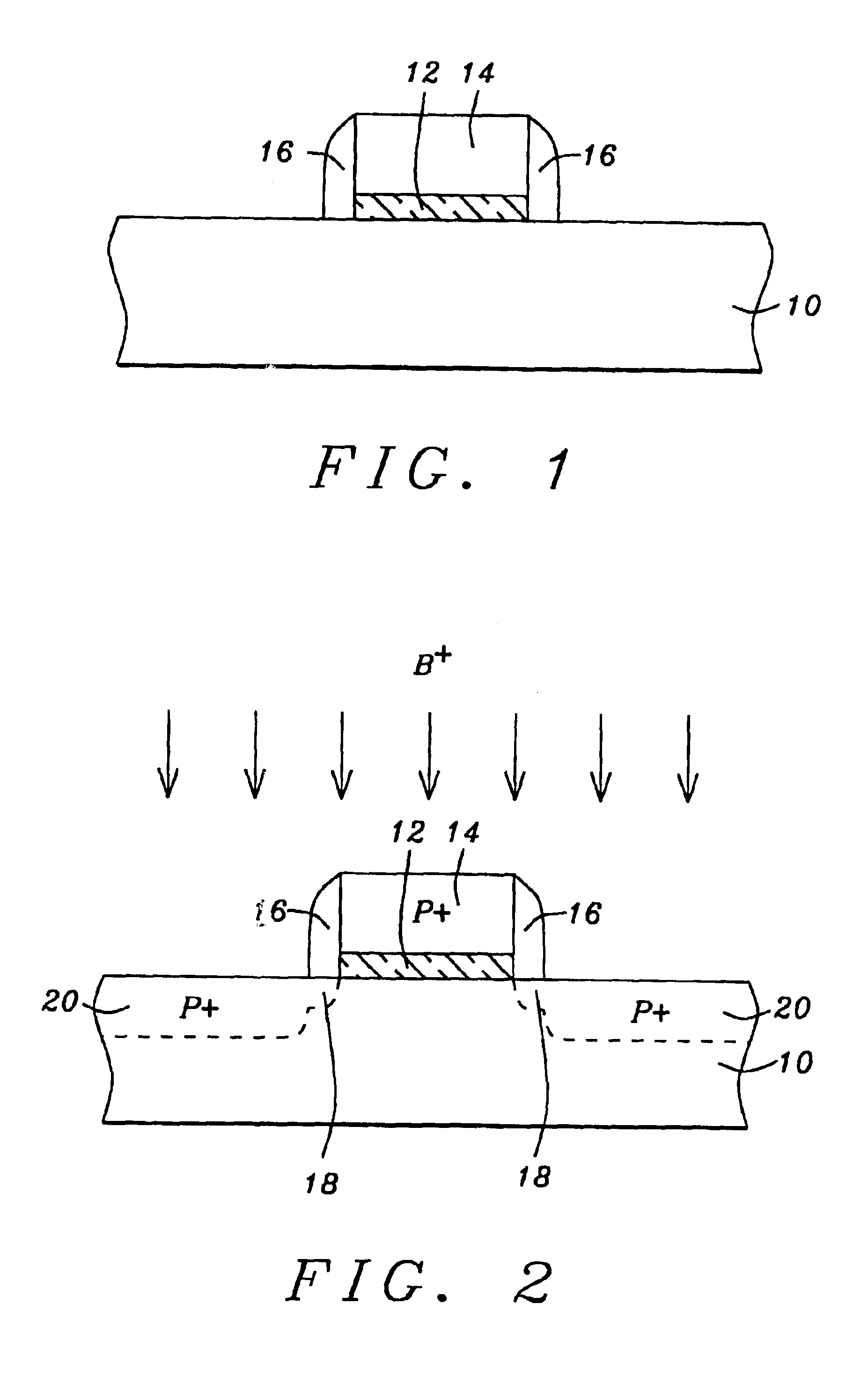Integration method to enhance p+ gate activation
a technology of complementary metaloxide and gate activation, which is applied in the field of semiconductor device fabrication, can solve the problems of device degradation, undesirable degradation of gate oxide integrity, and degrading device properties, and achieves the effect of rapid thermal annealing
- Summary
- Abstract
- Description
- Claims
- Application Information
AI Technical Summary
Benefits of technology
Problems solved by technology
Method used
Image
Examples
Embodiment Construction
Although the process of this invention can be generally used for activating p+ doped regions in a semiconductor device, the preferred embodiment described herein pertains to the p+ gate activation of a CMOS device. The process steps up to the gate structure formation, being known in the prior art, are not included in this description.
The gate structure, shown in FIG. 1, is formed using the steps of thin film deposition, photolithography, and plasma etching known in the prior art. The gate structure shows semi-conductor substrate, preferably silicon substrate 10; gate dielectric 12, selected from the group of materials comprising silicon dioxide, silicon nitride, nitrided silicon dioxide, oxygen doped silicon nitride, dual gate materials such as silicon dioxide / silicon nitride, and / or high-k gate materials comprising ZrO2, HfO2, and / or other refractory metal oxides; conductor gate 14, selected from the group of materials comprising poly-silicon, doped poly-silicon, dual gates compris...
PUM
 Login to view more
Login to view more Abstract
Description
Claims
Application Information
 Login to view more
Login to view more - R&D Engineer
- R&D Manager
- IP Professional
- Industry Leading Data Capabilities
- Powerful AI technology
- Patent DNA Extraction
Browse by: Latest US Patents, China's latest patents, Technical Efficacy Thesaurus, Application Domain, Technology Topic.
© 2024 PatSnap. All rights reserved.Legal|Privacy policy|Modern Slavery Act Transparency Statement|Sitemap



